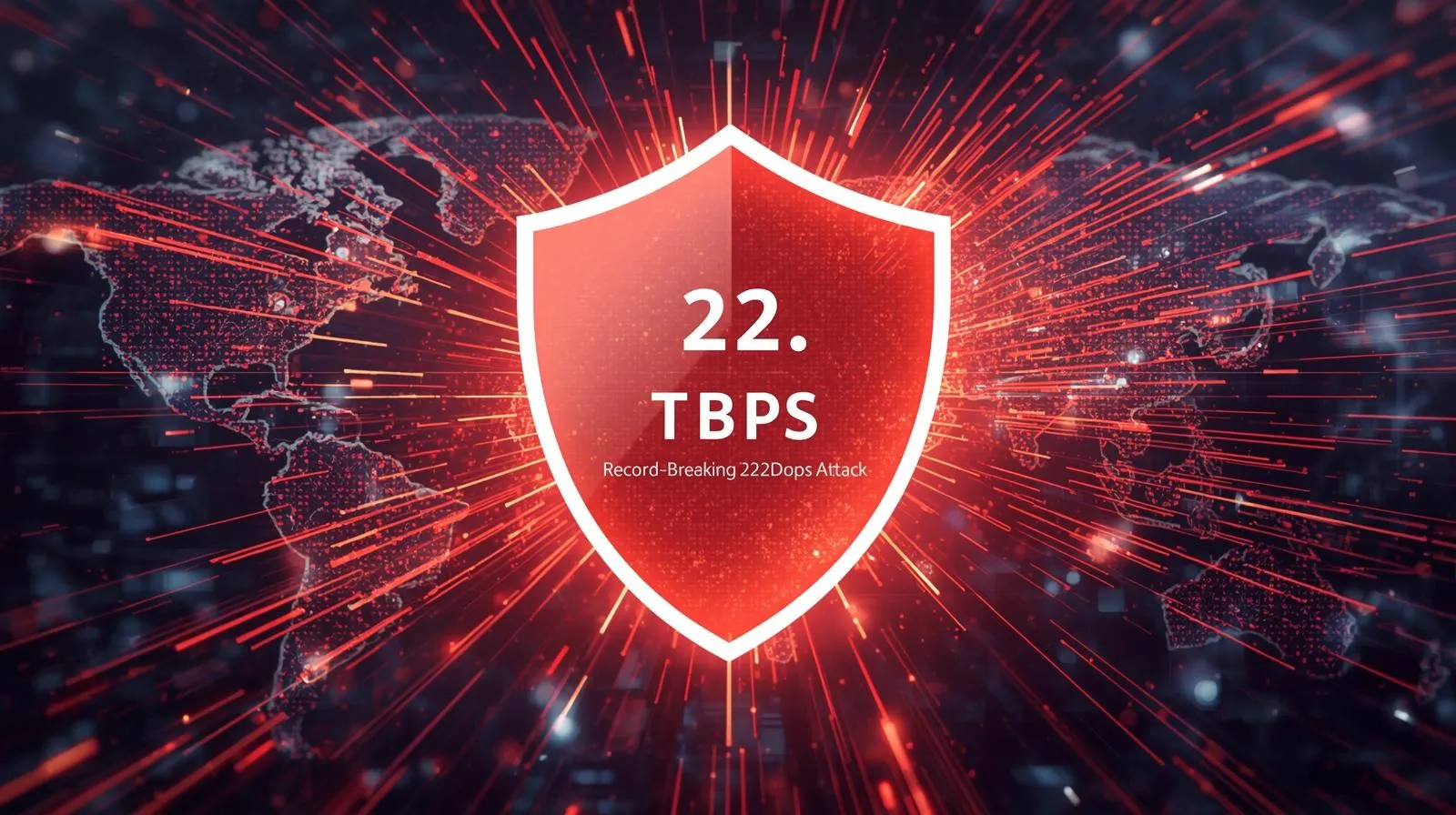
Cloudflare AI system defeating a record-breaking 22.2 Tbps DDoS attack
Cyber Warfare Escalates: Cloudflare’s AI Defeats Record 22.2 Tbps DDoS Attack
KATHMANDU, September 23, 2025 – In a dramatic display of automated cyber defense, Cloudflare has confirmed it successfully mitigated the largest distributed denial-of-service (DDoS) attack in history. The assault, which peaked at an unprecedented 22.2 terabits per second (Tbps), was more than double the size of any previously recorded event and was neutralized by Cloudflare’s systems without any human intervention.
This record-shattering attack signals a terrifying escalation in the power of global botnets and fundamentally changes our understanding of modern cyber threats.
The Attack: A 40-Second “Hit-and-Run”
A DDoS attack is a brute-force attempt to knock a website offline by flooding it with a tidal wave of junk traffic, creating a digital traffic jam that blocks legitimate users.
This particular attack was notable not just for its colossal scale but for its new and dangerous tactic: speed.
- Record-Shattering Scale: At 22.2 Tbps, the attack dwarfed the previous known record of an 11.5 Tbps UDP flood.
- “Hit-and-Run” Tactic: The entire event lasted only 40 seconds. This strategy is designed to cause maximum chaos and overwhelm security systems before human operators even have a chance to respond.
- Multi-Vector Assault: The attackers used a combination of techniques, harnessing a massive botnet of compromised computers and IoT devices to amplify the assault’s impact.
The Defense: AI vs. AI
The success of the defense marks a crucial turning point in cybersecurity. The attack was stopped not by human analysts, but by an autonomous, AI-driven system.
Cloudflare’s global edge network automatically detected the malicious traffic patterns, absorbed the entire 22.2 Tbps onslaught, and neutralized it close to its source. This prevented the attack from ever reaching its intended target, ensuring their services remained online.
This victory for automated defense proves that legacy security methods, like manual “scrubbing centers,” are now completely obsolete. In an era of machine-speed attacks, the only effective countermeasure is an equally fast, intelligent, and automated defense.
Why This Matters for Nepal
While this was a global event, its implications are immediate and direct for Nepal’s growing digital ecosystem.
Many of Nepal’s most critical online services from digital wallets (like eSewa and Khalti) and e-commerce sites to major news portals and government websites rely on global providers like Cloudflare for DDoS protection and performance.
An attack of this magnitude, had it been successful, could have caused widespread outages for the very services that power our digital economy . It’s a stark reminder that our digital infrastructure is deeply interconnected with the global network, and its stability depends on the strength of these frontline cyber defenses. This event underscores the critical need for Nepali businesses to partner with providers who possess the automated capabilities and sheer network capacity to withstand the next generation of cyber warfare.




